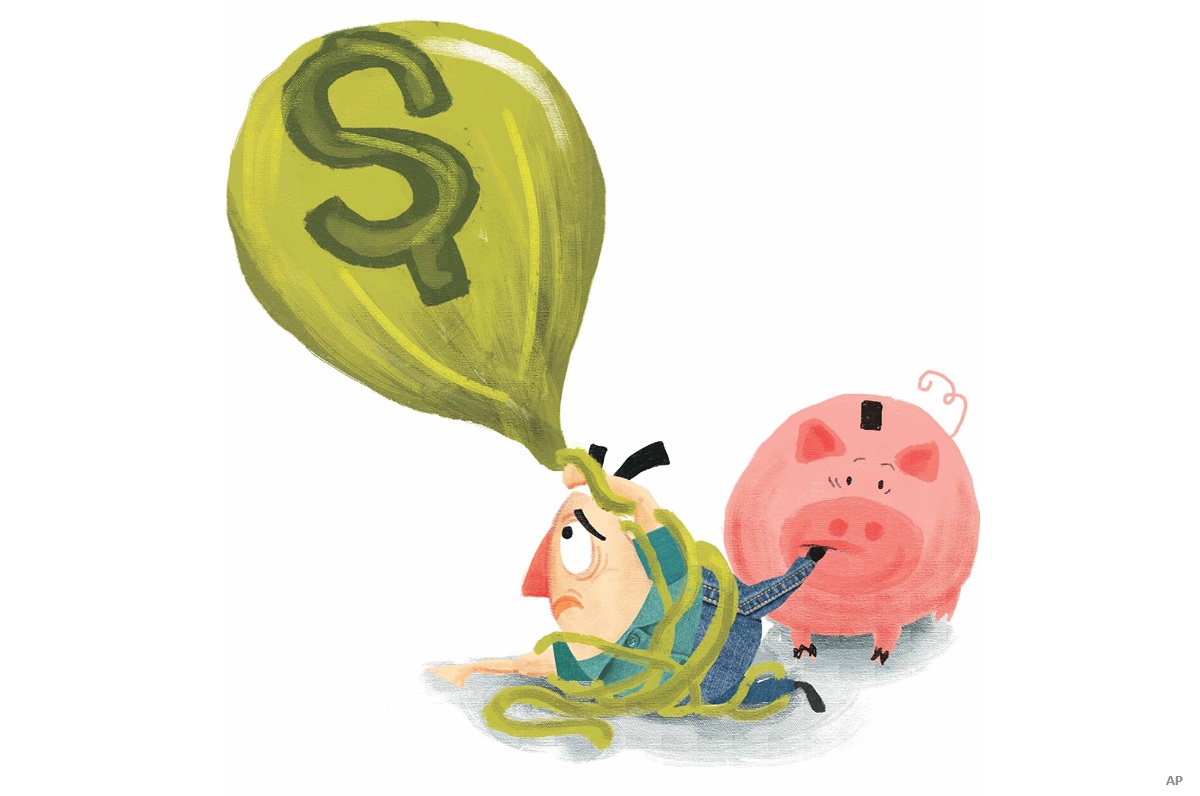
After two years of losses, emerging market (EM) equities are on a rebound, as monetary tightening has been easing and investors flock to stocks whose multiples are considerably cheaper than those in developed markets. Yet long-time EM specialist Philippe Langham argues that it’s not certain that these markets have recovered and it could be a while to declare a full-blown bull market.
“It’s not clear yet if emerging markets have truly started their comeback,” says Langham, lead manager of the $6.3 billion 5-star gold-medalist billion RBC Emerging Markets Equity Fund F and senior portfolio manager and head of emerging markets equities at London-based RBC Global Asset Management (UK) Limited. “We have had a few false dawns over the last two or three years where EM performance has temporarily improved, only to then see a setback. I believe that once the recovery truly starts, the recovery in EM, based on what we’ve seen in previous cycles, will have legs. But I am not sure that the recovery has started yet. So, it’s too early to say that the very recent bounce will be sustained.”
Emerging Markets Perform in Cycles
It’s been noted by analysts that the asset class tends to go in long cycles, lasting many years. There have been four major cycles of EM performance over the past three decades, with durations lasting from six to 12 years, observes Christoffer Enemaerke, a portfolio manager on the RBC Emerging Markets equities team at RBC Global Asset Management. In a research paper on the Emerging Markets Outlook for 2024, Enemaerke added that cycles of strong performance relative to developed markets (DM) were followed by relatively weak performance and that the most recent weak cycle lasted 12 years with zero annual earnings growth.
“In the last 35 years, we have seen two very long ‘up’ cycles where EM significantly out-performed developed markets and two very long ‘down’ cycles where EM considerably under-performed developed markets,” says Langham, a 32-year financial industry veteran. “These cycles have tended to last for several years and six to 12 years is what we’ve seen. It would be our view these very long cycles are likely to continue, and we’ve come through a very long period of under-performance.”
Year-to-date (March 21) RBC Emerging Markets Equity Fund F has shown relative short-term weakness as it returned 3.35%, versus 4.97% for the Emerging Markets Equity category. However, the fund has been a top performer over three-, five- and 10-year periods. It returned an annualized -1.59%, 2.94% and 6.95%, respectively. In contrast, the category returned an annualized -3.96%, 1.38% and 4.24%.
What Drives the Performance of Emerging Equities?
Several factors drive EM equities. First, notes Langham, there is earnings growth measured against the U.S. dollar, and second, the U.S. dollar’s performance against other currencies. “Emerging markets tend to do better when the U.S. dollar is weak, or weakening. And there tends to be a headwind when the U.S. dollar is strengthening,” says Langham, adding that the past cycle has been characterized by a strong U.S. dollar. “In the last two years, the U.S. dollar has been broadly flat against EM currencies. The overall trend for the U.S. dollar against other global currencies has shown continued strength. But there are some signs the U.S. dollar may be topping out.”
Monetary policies are another factor to consider. “For the first time ever, we have seen interest rates in EM converge with those in developed markets. This is definitely a positive for EM and lowers the cost of capital. Historically, we’ve also seen a relationship between lower interest rates and earnings growth. We view the decline in interest rates as an important positive factor for EM equities,” says Langham, adding that factors such as corporate earnings, GDP growth and other macro-economic variables, play an important part as well.
Indeed, a growing middle class and rising incomes are key drivers for some EM countries. “Over the long term, emerging market GDP growth has tended to be faster than DM. Two of the key factors are urbanization and a growing middle class. In terms of urbanization, in countries such as India and Indonesia, we believe there is a lot further to go. And as more parts of the populations enter the middle class, spending power increases and a combination of wage growth and increased affordability has tended to boost domestic demand,” observes Langham. “The key thing about people moving into the middle class is that consumers move away from spending the majority of their money on staples and necessities and their discretionary spending power suddenly increases,” he says, “Penetration in discretionary items like cars suddenly starts to increase as more and more consumers enter the middle class.”
Emerging Markets Offer Richer Discounts
For investors, the big attraction is that EM stocks are far cheaper than DM equities. “They are trading broadly at a 35-40% discount to developed markets. The discount has gradually increased over the last decade. We have moved from a 15-20% discount to about 40%, where we are now.”
The question is, does this represent a buying opportunity? “The case for EM equities to do well over the medium term, relative to developed markets, is a very strong one, driven by what we have seen historically. The two key factors that will support emerging markets are stronger earnings growth and a weaker U.S. dollar. Historically, those two factors have been very important. In terms of timing, however, it’s difficult to know when exactly that opportunity will occur. But we do feel that over the medium term, of five to seven years, that opportunity is a very strong one.”
Top Emerging Market Sectors
From an investment perspective, Langham argues that the consumer staples, consumer discretionary and financials sectors look attractive. “Those are the areas we favour. And within those sectors, we can find very good companies that we feel have sustainable competitive advantages and are trading at attractive valuation levels.”
While Langham is largely a bottom-up stock picker, from a sector viewpoint, the portfolio is dominated by a 27.2% weighting in financials, followed by 24.7% technology, 12.98% consumer cyclical, 11.31% consumer defensive and 8.66% healthcare. On a geographic basis, China represents the largest weighting at 22.2%, followed by Taiwan at 16.2%, India at 15.9% and South Korea at 10.4%.
How to Pick Emerging Market Stocks
In seeking companies, Langham screens them, first of all, for good management that can be trusted and has a strong track record. Second, he looks for firms with a sustainable competitive advantage that will ensure they will be there for the next five to 10 years. Third, he looks for companies that focus on the future and invest in research and development and infrastructure. An investor who tends to hold companies for many years, Langham does not necessarily look for companies that are cheap relative to their intrinsic value, but rather their growth potential over many years.
Running a portfolio of 47 stocks, Langham cites a top holding in Tata Consultancy Services Ltd. (TCS), the largest information technology services firm in India which operates in over 40 countries. “They have been able to compound earnings at 15-20% a year over the last decade,” says Langham. “Why do we like them? First, the management is headed by the Tata family, and they think very long-term. Second, the culture is very much an entrepreneurial one. Third, the competitive advantage that the company has would be factors such as their scale, reputation, and focus on innovation. It generates a return on invested income of 40%, with low capital requirements.” He notes that the bulk of revenues come from existing customers and the firm enjoys very low employee attrition compared to its competitors.
The Mumbai-listed stock is trading at a price-earnings multiple of 32.4 times. “That’s not high for a company with a ROIC of 40%.”
Another favourite is FEMSA (Fomento Economico Mexicano) SAB de CV (FMX), SA, a Mexican conglomerate. “In recent years, they have sold off their non-core investments. Their main asset is OXXO, the leading network of convenience stores in Mexico,” says Langham, adding that the firm also owns Coca-Cola FEMSA SAB de CV, which represents about 30% of FEMSA’s revenues. “It has sold off most of its non-core investments over the last two years. The company is a lot more focused now.”
Langham regards the company highly because it generates an ROIC of about 40% and has over 50% of the market share in the convenience store sector. “It’s in an area that has very good growth. And because of their scale they have strong negotiating power with suppliers. Overall, they have a very strong and experienced management team.” He notes that the firm is a beneficiary of rising incomes as Mexico is attracting global players that are exiting China and moving to Mexico, to be closer to the U.S. market.
A holding that’s been in the portfolio for about six years, the stock is trading at a price-earnings multiple of 21.8 times, according to Bloomberg.
Emerging Market Forecast
Looking ahead, Langham maintains that the outlook for EM growth and earnings is strong. “It’s largely driven by an improvement in margins, from a cyclically low base. And the case for the U.S. dollar to weaken, particularly against EM currencies, is also very strong. Those two factors would be the most important ones that will support better performance going forward.”






















